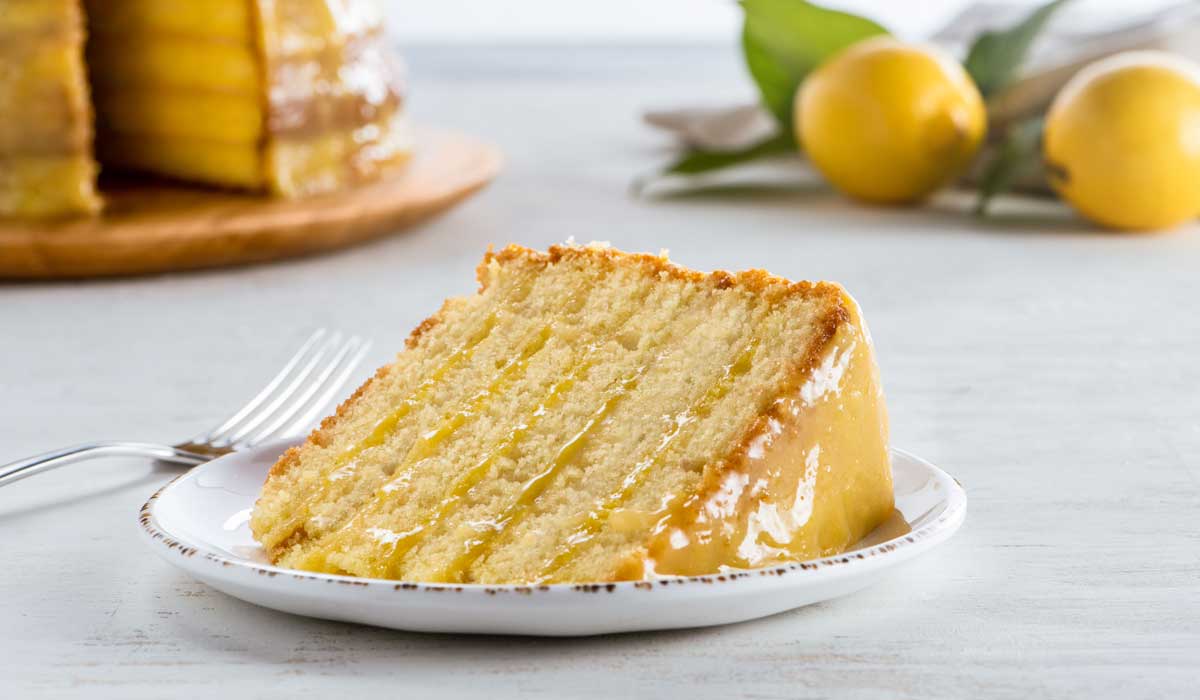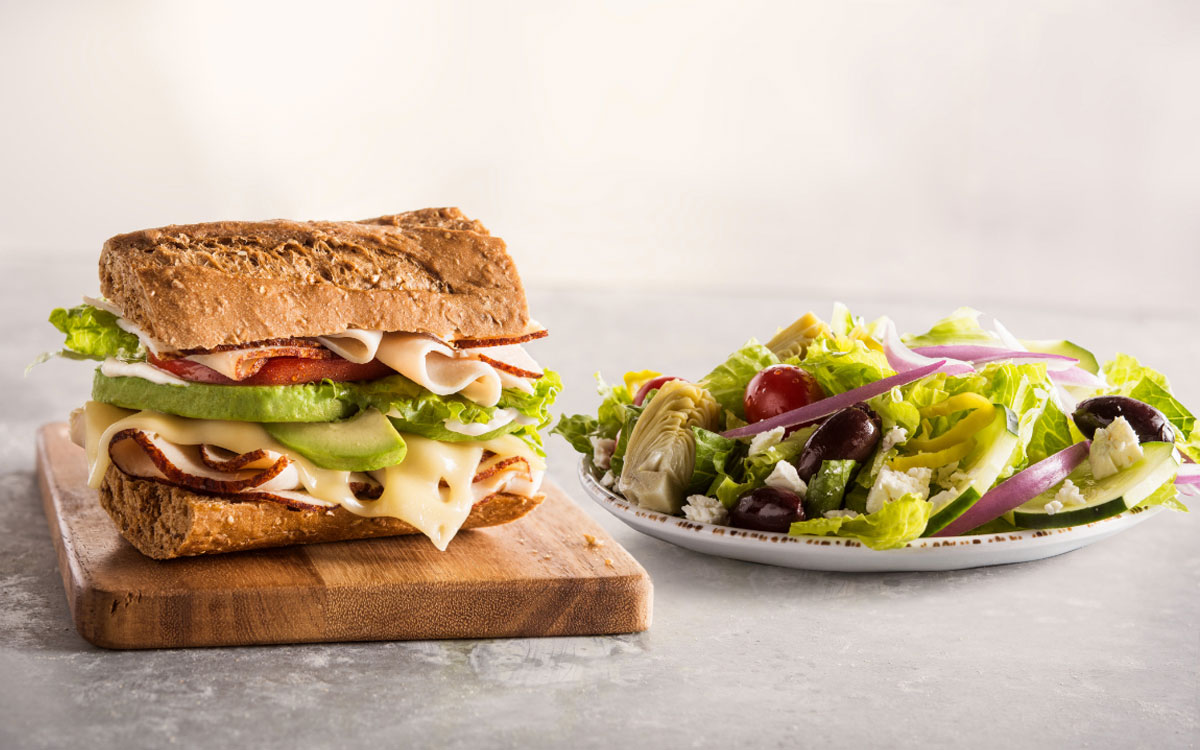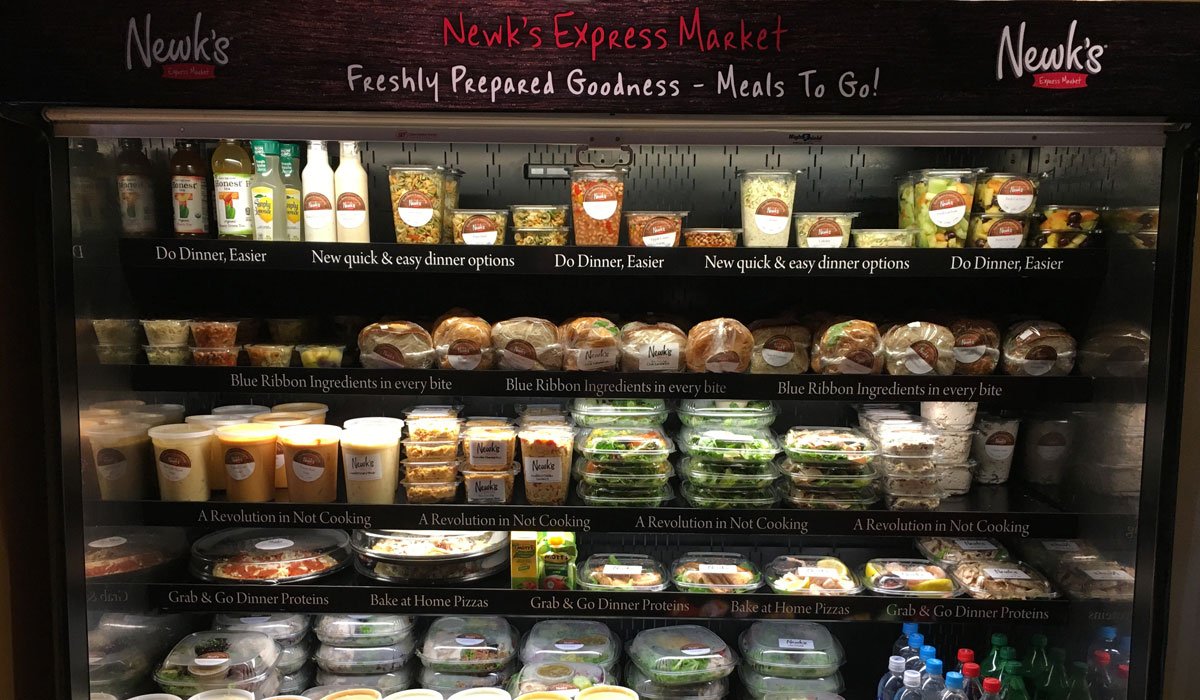Newk’s Eatery president Mike Clock had to chuckle. What else can you do when toilet paper starts outselling your brand’s No. 1 sandwich?
But so goes running a fast casual in the heart of a global pandemic.
These past six months haven’t lacked for odd developments at the 120-unit chain. Yet in more recent days, Clock’s mindset has flipped. “I’ve gone from, ‘will our sales every come back, to ‘how high will our sales go,’” he says. “At some point and time, we’ll get to a level where I think supply will be less than demand, and we’ll be ready to take advantage of it.”
In the weeks leading up to COVID-19, Newk’s sales were flat to slightly positive across the system. Within days, however, as dining rooms went dark in March, 75 percent of the business walked out.
Newk’s hastily assembled a task force to address operations, purchasing, culinary, and financial. And it asked two main things internally: How can we keep people employed, for as long as possible; and in what ways can the brand respond to customer needs? Namely, get its food to guests through avenues it hadn’t before.
Firstly, like many others, Newk’s dug into delivery, which was already up 100 percent, year-over-year pre-virus. The chain dropped fees for customers and worked to get on the front page of DoorDash. It also stood up curbside in four days systemwide.
Before COVID, digital sales—flowing through Olo and third-party platforms—mixed about 14 percent of Newk’s business. A little over 55 percent represented dine-in.
Then came the remarkable pandemic shift countless operators witnessed as the four-wall dynamic dropped to zero. Digital lifted 37 points to roughly half of the company’s take (the rest was standard to-go orders).
For curbside, which was a background initiative for about a year leading in, Newk’s partnered with FlyBuy. Consider the company an Uber for tracking cars that show up, Clock says. Newk’s can observe how close a customer is to the restaurant and keep employees from constantly looking out the window to see if a guest is approaching. The service alerts staff when they’re a mile out, .1 miles out. “It’s kind of our answer to the drive thru,” Clock says. Newk’s has only three pickup windows and two full drive thrus. On a side note, a pickup window in Arkansas pushed $10,000 a week just using the brand’s app for orders.
“We don’t think that’s going to go anywhere,” Clock says of curbside. “Especially in the next year or so.”
He adds Newk’s future builds, while not mandatory, will share a primary goal to include drive thrus. The corporate side plans to debut three in 2021.
Inside restaurants of late, Newk’s shifted gears to “hardware-less kiosks,” or a web app that enables guests to order and pay using their own devices. Clock says this is particularly vital for the mid-term recovery as restaurants expand dining room capacity and consumers venture back.
Newk’s put a mounted placard near the entrance with instructions to scan a QR code. Doing so downloads a web app that allows guests to sit or stand wherever they like and order and pay without talking to anybody or queuing in line with other guests. They can take a seat or stand in the corner, if they choose. After paying with Google Pay, Apple Pay, or a credit card (a gift card function is coming) staff will bring the food out to wherever they decided to wait.
As Adam Karveller, vice president of information technology, told Kiosk Marketplace, it’s tableside ordering through a “personal kiosk experience.” It also grants Newk’s the ability to effectively integrate tech with its point-of-sale and kitchen.

Clock calls this “a big idea” for Newk’s. It’s definitely a sizable change. The company was working to use Bite Kiosk software in Zivelo and NCR self-order kiosks before, which it expected to roll out across the footprint.
The mobile version uses the same kiosk software Newk’s boasted before, just optimized for personal devices.
Clock says Newk’s is no longer forging ahead with traditional kiosks given the climate. “We don’t think anyone wants to go start touching things that somebody else already touched,” he says. Newk’s is holding off until Q1 to launch a significant push behind it, Clock adds.
In the meantime, Newk’s is working to finalize a new app so curbside, loyalty, contactless payment, and QR codes can all host in one place. Clock expects that to land in November.
Self-delivery is coming, too. Not just direct through its app and site, but food actually delivered by Newk’s employees. “We’d like to control the experience, all through the whole process,” says Clock, hinting at 2021 as a launch date.
As these pivots picked up, Clock says transparency with franchisees did as well. Of the 120 or so units in Newk’s base, only 21 are company-run.
The brand removed all royalties in March and April and went to half in June. It also reduced ad fund contributions by 75 points. “Given the lower-volume sales, we want them to keep that in their pocket,” Clock says.
Newk’s kept the lines open with weekly—sometimes bi-weekly—calls. Not just to remain transparent, but also to hear success stories from the COVID trenches.
A lead request, given staffing challenges, was to pare down one of the fast-casual category’s more robust menus. Newk’s features about 39 core items and 400 SKUs coming out of the back.
For those units that closed and wanted to reopen, Newk’s developed a 16-item lineup. If the location was open and remained that way, it reduced to 27. In total, the 400 SKUs dropped to 250.
This dropped food cost a full four points as Newk’s also brought in some product that didn’t require as much preparation, like hand slicing and chopping. It got the total number down six points through additional efforts, including looking at every contract.
Newk’s was able to keep 97 of its 120 locations open throughout COVID. Today, there are 109 on line. And while “eight to nine” might remain shuttered—locations that were mostly struggling before the crisis—Clock says Newk’s feels fortunate to be where it is.
Selling toilet paper and other essentials helped keep the lights on at roughly 80 percent of its system as the chain figured out where to go next. “Newk’s Pantry” offered groceries from Grab & Go coolers available through curbside and delivery. Guests picked up staples, like paper goods, breads, and produce, and could also choose from a variety of meal-kit offerings to make Newk’s dishes at home. Things like a Soup & Sandwich Kit, Family Lunch Essentials, Build Your Own Pizza Kit, and Mac & Cheese Bar Family Meal Kit.

“While they’re shutting down dining rooms, you could still remain open if you’re a grocery store,” Clock says. “… It was just a way for consumers to still remain engaged, to be able to walk into our restaurants while we were putting in safety protocols.”
Another way Newk’s kept its brand in front of socially distant guests was through a reimagining of its catering offering. Pre-COVID, catering amounted to about 12 percent of the chain’s sales. Then, like dine-in, it dried up. No more mass gatherings.
However, people were still eating. So Newk’s took its vans and drove them to home owners associations, apartment complexes, and even schools. The catering vans include refrigeration or hot boxes. Newk’s loaded them up with premade meals and showed crowds it was open for business.
“We really took the catering to people,” Clock says.
The approach helped Newk’s keep some catering staff. And although it didn’t get back to 12 percent, the brand was able recover half of lost sales, Clock says. Additionally. Newk’s created “hero meal boxes” for people to donate to first responders, etc., where the brand could deliver.
All of these efforts happened faster than any system could plan for, Clock says. Newk’s scrambled and scrapped. People were put into positions they never signed up for. Systems changed from one hour to the next. In response, Clock wanted to infuse some levity into the gloomy reports. Newk’s created a “ministry of fun” for its support center with weekly get-togethers, trivia, Bingo, happy hours, and so forth. “We came together as a team and as an organization,” he says.
Dine-in sales have climbed back to about 35 percent for Newk’s, a Jackson, Mississippi-based that’s located mostly throughout the Southeast. All restaurants currently have the ability to reopen for dine-in, but it’s a decision made on a store-by-store basis. Units have added dining-room attendants, called “sanitation engineers,” to wipe down, clean, and sanitize throughout the day. Newk’s removed condiment stations and pre-portioned things like capers and pickles behind the salad line so customers could ask for them, but nobody needs to reach into a common area. The drink stations now include sanitation wipes for guests to hold when they touch handles.
On the staffing side, Newk’s instituted crew rotations so employees wouldn’t work the same time and days, especially with prep. This way if somebody reports a confirmed COVID case, Newk’s can shut down the restaurant, clean it, and then bring in a new crew who wasn’t exposed to the individual.
Overall, the company is about 90 percent of the way back to prior-year sales, Clock says. And that’s where renewed optimism is stemming from.
These fresh revenue channels could push Newk’s to greater heights than pre-pandemic days. “We’re very excited about it,” he says.
Also, Newk’s measures to lower costs put it on the front foot. “Just from my perspective, if sales come anywhere close, we’ve reinvented our cost structure, and I think that makes us attractive to not just existing franchisees but future franchisees,” Clock says.






